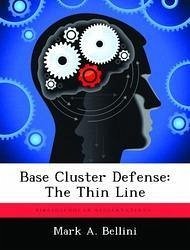This monograph examines the challenges of defending vital Combat Service Support (CSS) assets at the brigade level. The self defense mission inherent for Forward Support Battalions is evaluated to determine if current doctrine is adequate. Self defense missions are difficult for support units in the dispersed brigade support area, especially given their low combat power. After defining the question and methodology used for the study, this monograph examines the evolution of German defense doctrine and techniques used during operation Barbarossa, the invasion of Russia in 1941. The challenges that faced the Germans then are similar in nature to those confronting CSS unit commanders in establishing viable defense plans today. Next, the moral aspects of soldiers engaged in defensive combat operations are incorporated into the evaluation of techniques and doctrine used during operation Barbarossa and in the subsequent review of U.S. doctrine. Current U.S. doctrine is then reviewed as a basis for examining how CSS units plan and execute base and base cluster defense operations in the field. The common findings from the National Training Center and the Center for Army Lessons Learned are highlighted to demonstrate how well our doctrine is applied and how well it works. Finally, the above information is compared and analyzed to determine if improvements in CSS defense doctrine or techniques are needed. The monograph concludes that U.S. doctrine emphasizes perimeter defense to the exclusion of a more appropriate method, the strong point defense.
Hinweis: Dieser Artikel kann nur an eine deutsche Lieferadresse ausgeliefert werden.
Hinweis: Dieser Artikel kann nur an eine deutsche Lieferadresse ausgeliefert werden.








